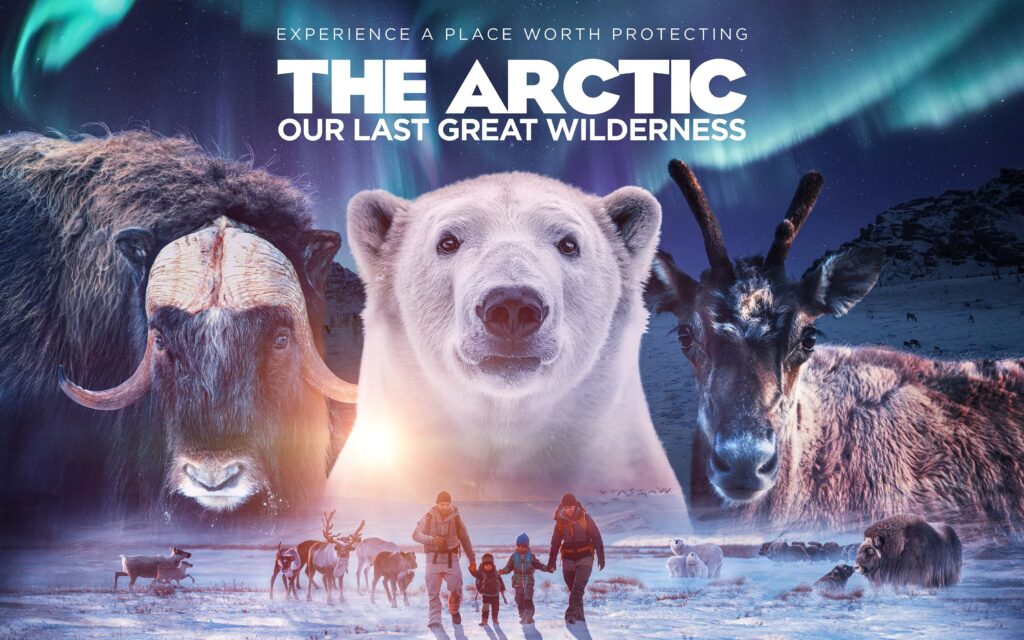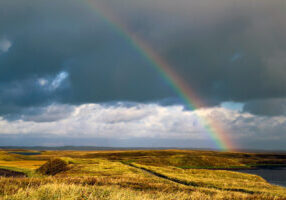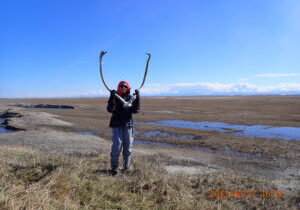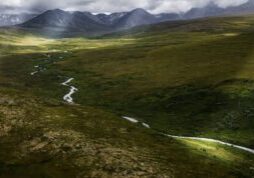ARCTIC REFUGE
Photo credit: Patrick J. Endres/AlaskaPhotoGraphics.com
WHY TO LOVE THIS PLACE
The Arctic National Wildlife Refuge, located in the northeast corner of Alaska, is one of the finest examples of wilderness remaining anywhere in the world. It is a perfect example of intact, naturally functioning Arctic and subarctic ecosystems. In fact, such a broad spectrum of diverse habitats occurring within a single protected unit is unparalleled in North America.
LOCATION

WILDLIFE REFUGE
Species including caribou, polar bears, waterbirds, arctic foxes, black and brown bears, Dall sheep, moose and muskoxen all rely on this diverse habitat.
WILDLIFE NURSERY
The coastal plain serves as birthing grounds for the Porcupine caribou in summer and the most important land denning area for America's threatened polar bears in winter.
MIGRATION DESTINATION
Approximately 200 species of birds call the Arctic Refuge home at least part of the year, including snowy owls, Arctic terns and golden eagles.
PUBLIC LAND
The Arctic Refuge covers 19.6 million acres in northeast Alaska, and includes the Mollie Beattie Wilderness, the second largest wilderness area in the U.S. at 8 million acres.
PEOPLE OF THE REFUGE
The Inupiaq village Kaktovik is located on the Arctic Ocean coast while the Gwich’in people live in several villages to the south along the border of the Arctic Refuge.
WATCH: EXPLORE THE ARCTIC REFUGE
Enjoy stunning footage from National Geographic photographer Florian Schulz, as featured in the PBS “Nature” series, and view this incredible landscape on the big screen in the new film “The Arctic: Our Last Great Wilderness” following the elusive 200,000 strong Porcupine caribou herd as it migrates to the Arctic Coastal Plain, one of the longest animal migrations on earth.
READ: LATEST REFUGE HIGHLIGHTS
LISTEN: 'THE REFUGE' PODCAST
In 2019, Alaska Wilderness League was approached by the folks at Threshold, a podcast focused on providing context and perspective on our planet, our environment and our climate. In the works was a series on the Arctic Refuge, and we were happy to assist in any way possible. Fast forward, and Threshold’s third season, focused on the Arctic Refuge, was the winner of a Peabody Award and filed an additional pod once the Trump administration released its final leasing decision. We highly recommend checking it out — you can listen to the full season here.
ENJOY THE PREVIEW:
FURTHER LISTENING:
Adam Kolton, former executive director of Alaska Wilderness League who sadly passed away in 2021, joined Hannah Blake and others at the conclusion of the Trump presidency to discuss the bounty of beauty and life that is the Arctic National Wildlife Refuge. He explained why this land is so vital for the culture and wellbeing of the Gwich'in people, whose villages reside along the migratory route of the Porcupine caribou herd — a herd that returns each year to the Arctic Refuge coastal plain to birth new calves.
THE FIGHT TO PROTECT THE ARCTIC REFUGE FROM DRILLING
The Alaska congressional delegation remains determined to see oil and gas development move forward in the Arctic National Wildlife Refuge, including destructive seismic exploration on the Arctic Refuge's coastal plain. This push is the result of Congress passing a controversial tax bill in 2017 that mandated an oil and gas program for the Arctic Refuge, to include two lease sales to be held by 2024 for the coastal plain, sacred lands of the Gwich’in people and vital habitat for caribou, polar bears and migratory birds.
For more on the fight to protect the Arctic Refuge, visit the Arctic Refuge Defense Campaign.
Reasons not to drill in the Arctic Refuge:
![]() Polar Bears
Polar Bears
Female polar bears are increasingly building dens on the Arctic Refuge coastal plain to give birth to their young, primarily due to disappearing sea ice. Though polar bears prefer to spend the majority of their time on the pack ice of the Arctic Ocean, that ice is receding due to warming temperatures, making land denning sites in the Arctic Refuge more and more important.
![]() Caribou
Caribou
The coastal plain serves as calving grounds for the Porcupine caribou herd, a key subsistence resource critical to the lives and culture of the Gwich'in people.
![]() Migratory Birds
Migratory Birds
Approximately 200 species of birds rely on the Arctic Refuge at least part of the year, including snowy owls, Arctic terns and golden eagles.
In addition to threatening wildlife, the Center For American Progress (CAP) has prepared a rundown on the waste of taxpayer money that drilling the Arctic Refuge would be. You can read more here. CAP also found that burning the extracted oil and gas from the Arctic Refuge would mean another 4.3 billion metric tons of carbon dioxide equivalent released into the atmosphere, roughly equivalent to two-thirds of U.S. annual emissions in 2017.







